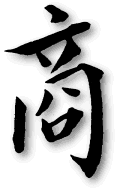The existence of the Shang Dynasty is supported by archaeological evidence, but the dates remain uncertain. Archaeological finds point to a state that existed in the Yellow River plain from 1554 B.C. to 1045 B.C. Information about the Shang Dynasty comes from bronze artifacts and oracle bones, which were turtle shells or cattle scapula on which were written the first recorded Chinese characters, found in the Huang He valley. Tens of thousands of bronze, jade, stone, bone and ceramic artifacts have been obtained; the workmanship on the bronzes attests to a high level of civilization. In terms of inscribed oracle bones alone, more than 20,000 were discovered. Some Chinese characters found in the inscriptions are still in use today.
The Shang was one of the oldest tribes of ancient China, concentrated mainly along the lower reaches of the Yellow River in Hebei Province. Later they extended their influence into a great part of nothern and central China.
In the sixteenth century B.C. Tang, the Shang ruler, banded together several tribes to defeat Jie, the Xia leader, and became the first Shang king. A line of hereditary Shang kings ruled over much of northern China, fighting frequent wars with neighboring settlements and nomadic herdsmen from the inner Asian steppes.
Shang civilization was based on agriculture, augmented by hunting and animal husbandry. Two important events of the period were the development of a writing system, as revealed in archaic Chinese inscriptions found on tortoise shells and flat cattle bones (commonly called oracle bones), and the use of bronze metallurgy. A number of ceremonial bronze vessels with inscriptions date from the Shang period; the workmanship on the bronzes attests to a high level of civilization.
During its first stage at Zhengzhou (16th - 14th century B.C.) its capital was moved five times.
Its second stage is identified with the event of the Shang leader Pan Geng moving the capital to Yin (modern Yinxu at Anyang, Henan province), the name by which we now identify this phase. The Yinxu site is more than 24 square kilometers in area. There it remained for 273 years until the last king burned to death in his palace and the dynasty collapsed.
The Anyang capital was a center of glittering court life. Chopsticks came into use replacing knives at the table and reflecting the ascendancy of the scholar over the warrior. Court rituals to propitiate spirits and to honor sacred ancestors were highly developed. In addition to his secular position, the king was the head of the ancestor and spirit-worship cult. Evidence from the royal tombs indicates that royal personages were buried with articles of value, presumably for use in the after-life. Perhaps for the same reason, hundreds of commoners, who may have been slaves, were buried alive in the royal tombs upon the death of the ruler.
